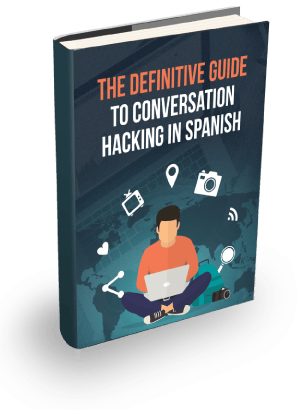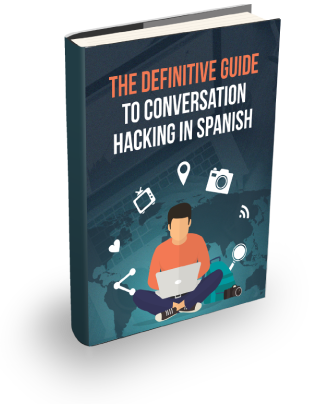
If you want to be good, practicing Spanish should be part of your daily routine. But at one point or another we all get into a funk. Language learning takes time and at some stage it is easy to slip into a place where you just aren’t feeling it.
Overwhelm, boredom, procrastination or perfectionism can drive us to a point where we start to ask the big questions: What’s the point? Do I really want to keep doing this? Is it easier to quit than keep going? These questions can pop up and that’s okay – it’s human.
In this post I’m going to suggest a few things that you can consider to help get you out of that funk.
A Change Of Scenery
If you are always studying in the same place, find somewhere new.
They say a change is as good as a holiday – and while I think this statement is not entirely true (a holiday can be pretty damn good) there is still wisdom to consider.
A break in surroundings can be just the jump start you need to get you back into the process of good productive study.
For me, I spend a lot of time behind my desk at home. Getting out and going to a library or coffee shop is a great way to break the pattern.
Language learning is about forming new connections in the brain. Setting up in a new environment is a great way to introduce new stimuli to the brain to help form new connections.
For example, you could associate new vocabulary with the location that you practiced – such as the coffee shop. Later when you want to recall the words you can think to yourself ‘where did I learn that word?’ and then when you think of the coffee shop the word pops right into your brain. Associations are a powerful strategy when it comes to language learning – this is one strategy that I have used to help make new vocabulary stick.
Study With A Friend
A good way to change things up and break your routine is to find a friend to practice with.
Studying on your own all the time is not necessarily the best way to improve. It can be good at the start but once you start to develop you skills you need to get out and start testing them out on others.
Ideally you will want to find someone who is studying Spanish but it’s not necessary.
If you can only find a friend or family member that isn’t learning Spanish you could teach them a few words or phrases. Teaching is a great technique to help reinforce to yourself that you understand the concepts because you need to understand the concepts first before you can teach them.
Also consider finding someone that isn’t a close friend or someone that you aren’t comfortable with. Finding someone that you aren’t completely comfortable with can be a good way of putting a little bit more a challenge on yourself.
The additional challenge is not only good for your Spanish but it is good for developing relationship building skills. Developing relationship skills is important to develop in parallel to your Spanish because one of the main reasons to learn a language is to get out and meet new people on the other side of the world. There becomes little point if you are not up for meeting new people when you get there.
Take A Break
As I said earlier it’s okay if you just aren’t feeling it. If that is the case take a REAL break.
A real break means not just a day off or night off – take a week or more if you have to.
When you give yourself some real breathing space you will hopefully build up a longing such that when you get back to practicing again you are more determined to keep learning.
Set A Countdown
How often do you actually measure how much study you are doing?
For me, I know my productivity is best when I set a countdown timer.
It may sound a little OCD but when I switch the timer on, I know that I now have a finite defined time to get something done.
When I know the timer is going to stop in 30 minutes or so, I know I have to get cracking between now and then if I want to complete the task that I am attempting.
It keeps me going knowing that the timer will run out and between now and then I need to focus without distraction.
Give it a try, it may help you focus.
I suggest shorter intervals to start with 10 – 20 minutes , then build up as you go. You should aim to get to 30 minutes or more of good focused practice.
Step Outside Your Comfort Zone
If you have got into a plateau that you need to break – maybe you have been focusing on one area of your Spanish such as writing or grammar for a bit too long – look to step outside your comfort zone.
See if you can find something that is going to challenge you in a different way. Look for a task that is just little bit above your comfort level. An example could be to watch a movie in Spanish without the subtitles.
Another option is to log on to iTalki.com and found a language exchange or go out to a local meet up. There are lots of different ways to challenge yourself and if you have been in a basic study rhythm for a while then stepping outside your comfort zone is not only going to spice it up, it will help accelerate your Spanish skills.
Funks can be hard if you get caught in one. But language acquisition is about persistence and staying power. One way to make your saying power better is by attacking the problem from a different angle.
Remember that motivation is important, if you need a reminder you can always revisit an earlier post on ‘the why’.
If for you practicing Spanish has become a bit of a chore, hopefully this post has given you a few ideas to help spice things up and keep you on track.
What do you use to get yourself out of a funk, leave a message below and let me know. Are there any techniques that you can think of that I have missed?



Leave a Reply